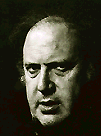| The seventies and the eighties | ||
The consolidation of democracy brought with it the consolidation of this type of writing and fostered the appearance of new authors and genres. An attempt was made to restore the impact the essay had had before the war. Works of a philosophical nature were published, together with translations of German works and original studies by writers of the category of Ramón Piñeiro. New essay genders appeared such as sociolinguistics and literary theory -Basilio Losada, Francisco Pillado... theology and religion -Torres Queiruga, Chao Rego...-, philosophy -Martínez Marzoa...- history -Ramón Villares, Felipe Senén, ... politics, economy, etc. Playwriting underwent drastic changes in the second half of the twentieth century; the work of authors in the immediate post-war period such as Alvaro Cunqueiro and Carballo Calero, existed alongside that of the new writers such as Manuel María, Vidal Bolaño, Manuel Lorenzo, who aimed to formally break with the past. All of them opened up the theatrical world to the latest trends. At the end of the 60's and beginning of the 70's a number of Theatre companies were born: "Grupos de Teatro Independente" -O Facho, Teatro Crico...-. In 1973 the I Mostra de Teatro de Ribadavia is hold and in 1984 the Centro Dramático Galego was created. During these years a number of associations try to promote theatre by focusing on a youthful audience. New publishing houses appeared -Xerais, Sotelo Blanco, Vía Láctea, Ir Indo, etc. - in response to prolific literary production and the need for educational books. However, the majority of the press and the media did not participate in this qualitative rise in the local language, using Spanish alone. New narrative tendecies shown up with authors who made their debut before 1975 (María xosé Queizán, Alfredo Conde, Paco martín, etc) and later (Víctor Freixanes, Xavier Alcalá, carlos Reigosa, Suso de Toro, Martínez Oca, Manuel Rivas ...). One of most valuable contributions to the normalization of the Galician language was the publishing of children's and teenager's collections (Xabarín, Doce pro vintedous, Fóra de xogo, Gaivota, Arbore, Merlín, Sotelo Blanco Infantil, etc.) Under the democratic régime, Galicia became an Autonomous Community with two official languages -Galician and Spanish-. In addition to legislation regulating the use of the language, it was also necessary to lay down the rules for the standard language. In 1982 the "Instituto da Lingua Galega", which had been created in 1971, and the "Real Academia Galega" proposed the "Normas Ortográficas e Morfolóxicas do idioma galego" (Spelling and Morphological Rules for the Galician language) which became official with the promulgation of the "Law for Linguistic Standardisation". At the entry of the twenty-first century, the Galician language is very much alive, being protected by law and spoken by a large number of people. All that still needs to be done is to continue along the path begun, taking as an example the unceasing work of those who, both inside and outside Galicia, fostered the presence and contribution of the Galician people in the world. |
 Manuel Rivas.  Xosé L. Méndez Ferrín.  | |
Back | ||